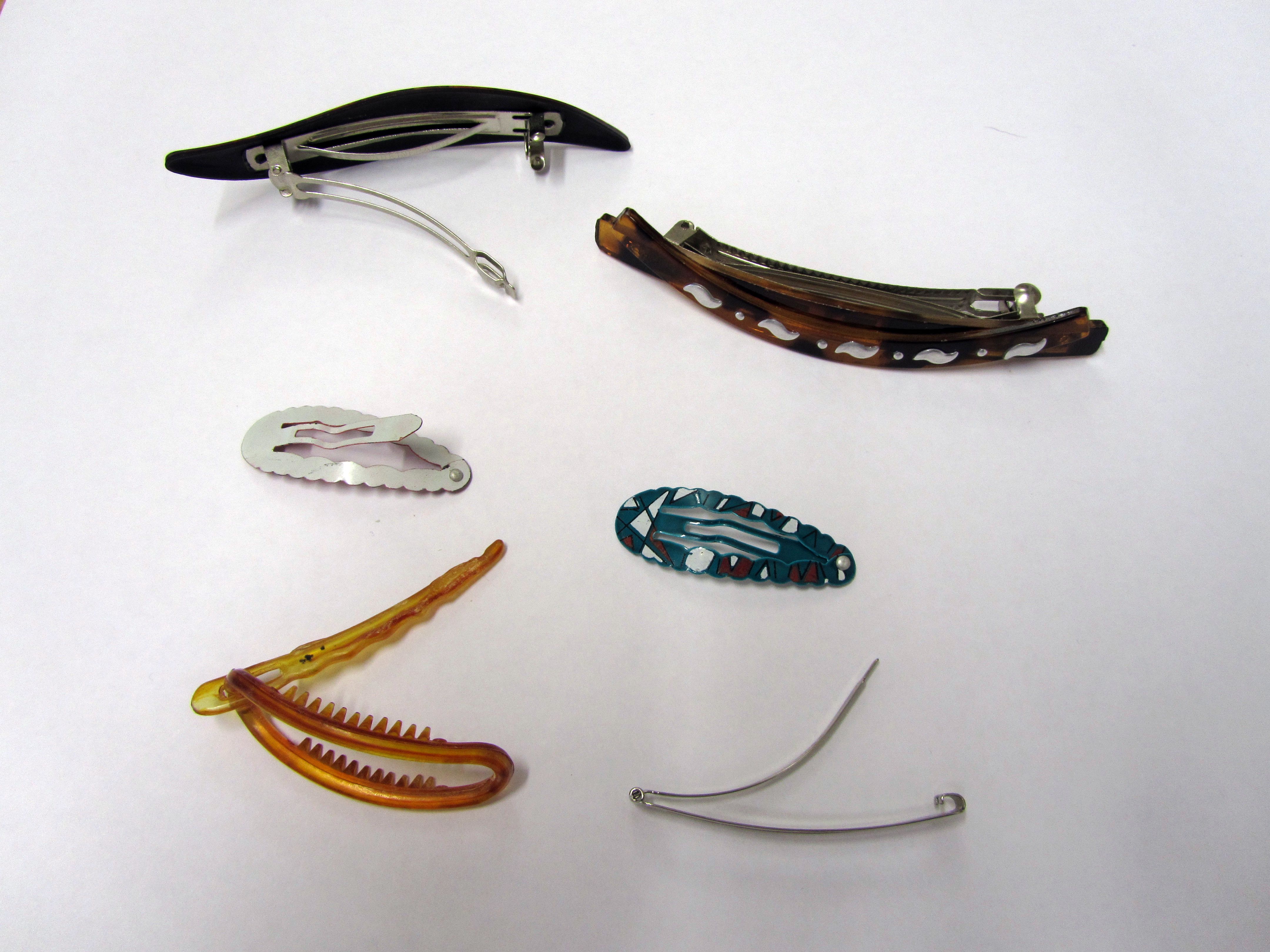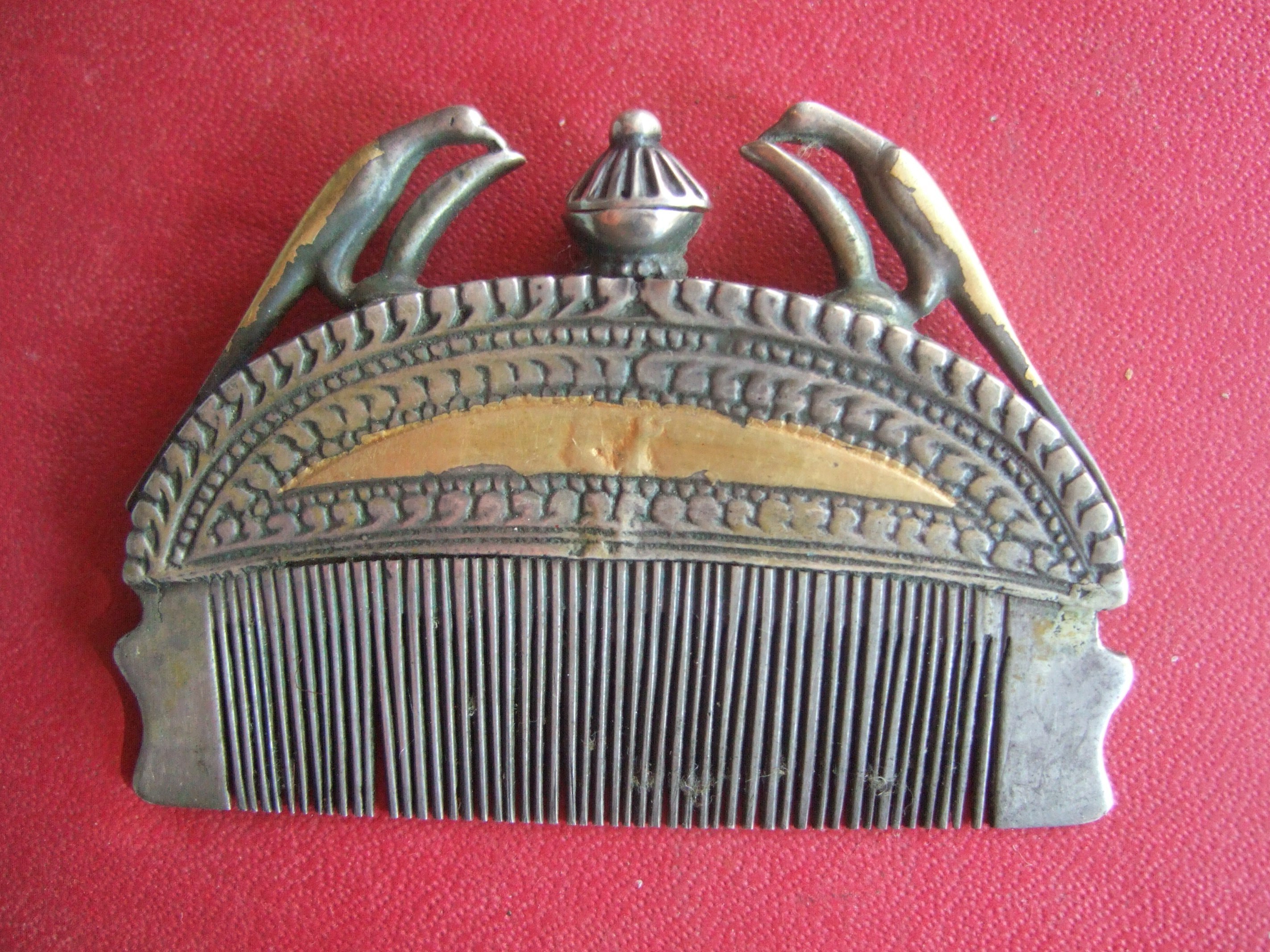Barrette on:
[Wikipedia]
[Google]
[Amazon]

 A barrette (
A barrette (
 * Alligator clip
** Double-prong alligator clip
**Fully lined alligator clip
**Partially lined alligator clip
**Unlined alligator clip (Yoyette clip)
* Auto-clasp barrette
* Bendy or snap clip
* Bow barrette
* Butterfly clip
* Claw clip, hair clamp, or hair claw
*
* Alligator clip
** Double-prong alligator clip
**Fully lined alligator clip
**Partially lined alligator clip
**Unlined alligator clip (Yoyette clip)
* Auto-clasp barrette
* Bendy or snap clip
* Bow barrette
* Butterfly clip
* Claw clip, hair clamp, or hair claw
*

 A barrette (
A barrette (American English
American English, sometimes called United States English or U.S. English, is the set of variety (linguistics), varieties of the English language native to the United States. English is the Languages of the United States, most widely spoken lang ...
), also known as a hair slide (British English
British English is the set of Variety (linguistics), varieties of the English language native to the United Kingdom, especially Great Britain. More narrowly, it can refer specifically to the English language in England, or, more broadly, to ...
), or a hair clip, is a clasp for holding hair
Hair is a protein filament that grows from follicles found in the dermis. Hair is one of the defining characteristics of mammals.
The human body, apart from areas of glabrous skin, is covered in follicles which produce thick terminal and ...
in place. They are often made from metal
A metal () is a material that, when polished or fractured, shows a lustrous appearance, and conducts electrical resistivity and conductivity, electricity and thermal conductivity, heat relatively well. These properties are all associated wit ...
or plastic
Plastics are a wide range of synthetic polymers, synthetic or Semisynthesis, semisynthetic materials composed primarily of Polymer, polymers. Their defining characteristic, Plasticity (physics), plasticity, allows them to be Injection moulding ...
and sometimes feature decorative fabric. In one type of barrette, a clasp is used to secure the barrette in place; the clasp opens when the two metal pieces at either side are pressed together.
Barrettes are worn in several different ways partly according to their size, with small ones often used at the front and large ones in the back to hold more hair. They are used to keep hair out of the eyes, or to secure a bun, French twist, or ponytail. Short metal "clip" barrettes are sometimes used to pull back front pieces of hair. Barrettes are also sometimes used purely for decorative purposes, usually by women.
Larger barrettes—as long as —are designed to pull back longer hair or a large amount of hair and are usually worn at the back of the head, often "tails up". If the intent is to pull hair back, the length of the barrette is not the only consideration; the width of the barrette also indicates approximately how much hair can be secured by it.
Many other kinds of hair clips were invented in the 20th century. The ones that are more well-known are the elongated hair clip (seen at the top of the "Various types of hair clips" image) which was invented in 1972 by Marnie Bjornson and the simple bendy clip which works by snapping the clip from a concave to convex position, springing it into a locked position, or opening it. Several of these are seen in the image.
Types
 * Alligator clip
** Double-prong alligator clip
**Fully lined alligator clip
**Partially lined alligator clip
**Unlined alligator clip (Yoyette clip)
* Auto-clasp barrette
* Bendy or snap clip
* Bow barrette
* Butterfly clip
* Claw clip, hair clamp, or hair claw
*
* Alligator clip
** Double-prong alligator clip
**Fully lined alligator clip
**Partially lined alligator clip
**Unlined alligator clip (Yoyette clip)
* Auto-clasp barrette
* Bendy or snap clip
* Bow barrette
* Butterfly clip
* Claw clip, hair clamp, or hair claw
* Comb
A comb is a tool consisting of a shaft that holds a row of teeth for pulling through the hair to clean, untangle, or style it. Combs have been used since prehistoric times, having been discovered in very refined forms from settlements dating ba ...
(certain types)
* French barrette
* Ponytail barrette
* Tortoise-shell barrette
* Updo barrette
References
External links
* * {{Headgear Hairdressing Headgear